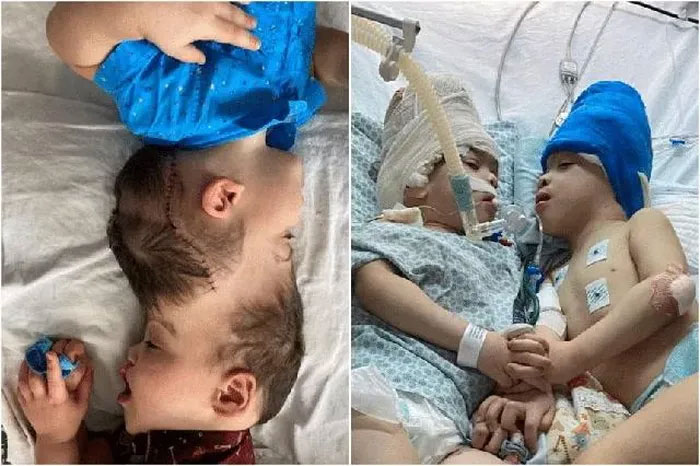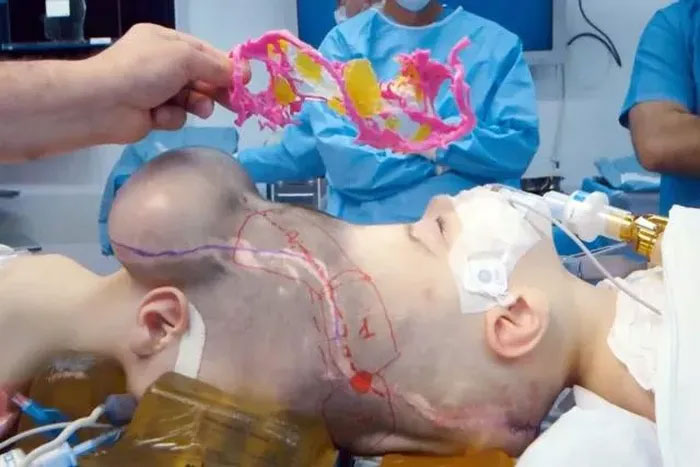Using virtual reality technology, surgeons in the UK and Brazil successfully separated the heads of conjoined twins
With the help of virtual reality technology, a conjoined twins in Brazil have undergone successful surgery. Although the surgery took place in Rio de Janeiro, direction came from a team of specialists based at London's Great Ormond Street Hospital.
The groups involved have been experimenting for months with virtual versions of twins, Bernardo and Arthur Lima. Using tomography and magnetic resonance imaging technology, the virtual model of conjoined twins has achieved the necessary precision, enough for doctors to experiment with surgery in a virtual reality environment.

This is one of the most complex head separation processes ever performed.
According to the fundraiser Gemini Untwined, which funded the one-of-a-kind surgery, it was one of the most complex head separations ever performed. Surgeon Noor ul Owase Jeelani called it the 'cosmic era' achievement.
The twins underwent a total of 7 surgeries, taking a total of 27 hours and with the help of nearly 100 medical staff. Surgeons from the two countries wore virtual reality headsets, and worked together in a VR operating room; Experts based in the UK have observed and guided the surgeons in Brazil, who directly perform the operation.
Before putting the two babies on the operating table, the doctors practiced for months in a virtual reality environment to perfect their head separation technique. The skulls of Bernardo and Arthur were stuck together, making the surgery unbelievably complicated.
According to data from the US National Institutes of Health, the odds of having a conjoined twins are only 1 in 2,500,000, and only 30% of babies survive in the first month after birth. At 4 years old, Bernardo and Arthur Lima became the oldest conjoined twins to have a successful surgery.

Two babies Bernardo and Arthur Lima before surgery.
Talking about the 'high-tech' aspect of the surgery, Mr Jeelani told PA media: 'It's amazing to be able to see the babies' anatomy and do the surgery before risking it. grandchildren's network. You can imagine how [that process] calmed the surgeons."
He continued: 'In a way these surgeries can be the hardest of our lives, and being able to do the surgery in a virtual reality environment is like a human working on Mars. .
In the past, doctors have failed in an attempt to separate the heads of two babies Bernardo and Arthur, when scar tissue prevented the surgery from going smoothly. But thanks to the practice in virtual reality, the doctors were more confident in the actual operation and they successfully separated Bernardo and Arthur.
Currently, the two children are in the process of recovery, doctors will continue to monitor their health status in the next 6 months.
- Successfully separated conjoined twins
- Successfully separated conjoined twins
- Successfully separated conjoined twins
- The mystery of the sex life of world-famous conjoined twins
- Thailand: Successfully separated conjoined twins heart
- America: Successfully separated conjoined twins
- America: Successfully separated two twin girls conjoined from belly to leg
- Virtual reality technology harms health
- Successfully separated twins sticking to the spine
- You will understand the real fear when wearing virtual reality glasses playing horror games when watching this clip
- Using 3D technology to recreate conjoined twins body parts
- The curious life of conjoined twins 200 years ago
 13 causes of non-itchy rash
13 causes of non-itchy rash How the mouse with human ears changed the world?
How the mouse with human ears changed the world? The truth about 'fried rice syndrome!
The truth about 'fried rice syndrome! What is dental implant?
What is dental implant?